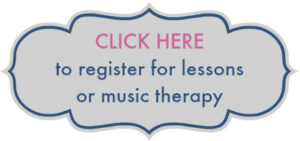
Song discussion and songwriting can be beneficial and fascinating practices. Not only do they give an opportunity for the client to respond to a song in a real and genuine way, but they are also exercises in expecting the unexpected.
It can be scary to never really know how the client will respond. Thankfully, through many hours of clinical training, embracing the uncomfortable has become easier. I’ve come to appreciate the moments where my clients feel empowered to express themselves through song lyrics in a safe space.
How do I validate emotions that can’t exactly be defined?
One song discussion and songwriting intervention that I have recently used involved goals of discriminating and processing emotions, increasing self expression, increasing reminiscence, and strengthening coping skills.
The application began when I played a song that was requested by my client. Once the song ended, I asked my client how it made her feel. After a long pause, my client answered, “somewhat in between.”
In my head, I was pondering: how do I validate emotions that can’t exactly be defined? Do they need to be defined to be valid? All of a sudden, this intervention popped up in my head that both honored my client’s response and could be a starting point in helping my client increase her coping skills and emotional processing.
My client mentioned that the song made her feel both sad and happy. I grabbed my white board and used a dry erase marker to draw a happy face on the left side of the board, a sad face on the right side, and a neutral face in the middle.
With each experience, I validated what was shared and made her know that it was a safe place to share only what she felt comfortable with.
Next, I went through the lyrics, two lines at a time, and asked my client to place the lines under each emotion that best matched how the lyrics made her feel.
After we finished placing the lyrics under the various emotions, we took a look at the board and saw just how mixed a song could make someone feel. Not only was this helpful for my client to visually see the diversity of emotions, but it also helped the her to see that it was okay to not feel strictly “happy” or “sad” all the time.
To make this intervention more personal and to further allow my client to discriminate emotions based on her own experiences, I prompted my client to describe moments in her life where she felt happy, sad, and in between. With each experience shared, I validated what she said and again stated that it was a safe place to share only what she felt comfortable with.
We didn’t have time to put her experiences to music yet, but we are excited to finish our original song during our next session.

Song discussion and songwriting can be a very personal experience, and therefore can look different for each client. What are ways that you have incorporated emotional goals and coping skills in song discussion and songwriting? We’d love to hear from your experiences, so let us know in the comments below!



